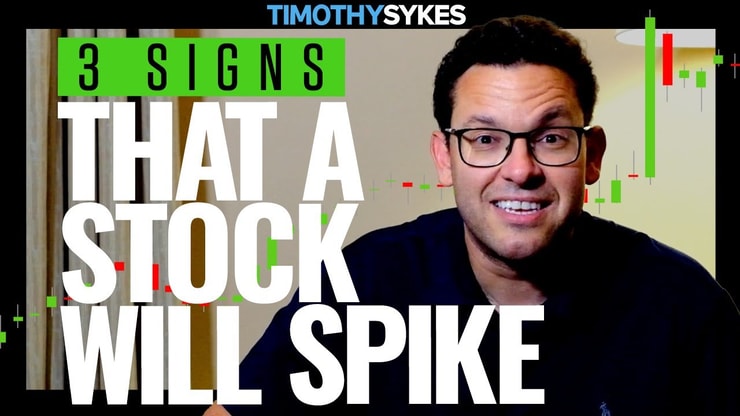Understanding the Moving Average Convergence Divergence (MACD) is a cornerstone of technical analysis in trading. This tool, developed by Gerald Appel in the late 1970s, is essential for identifying changes in the direction, strength, and momentum of market price trends. In this guide, we’ll explore how to utilize MACD to enhance your trading strategy effectively.
This guide will cover the fundamental aspects of MACD, including its calculation and the types of signals it generates. We’ll get into practical strategies for interpreting these signals and outline common pitfalls and how to avoid them, ensuring you can apply this tool with confidence in various market conditions.
I’ll answer the following questions:
- What is MACD (Moving Average Convergence Divergence)?
- What are the components of MACD?
- What are the three main types of signals generated by MACD?
- How do crossover signals indicate market trends?
- What is the significance of divergence signals in MACD?
- How can MACD help identify overbought or oversold conditions?
- What are some common mistakes traders make when using MACD?
- How can traders minimize the risk of false signals with MACD?
Let’s get to the content!
Table of Contents
- 1 What Is MACD (Moving Average Convergence Divergence)?
- 2 Types of MACD Signals
- 3 Common Pitfalls and Challenges when Interpreting MACD Signals
- 4 Tips for Avoiding False Signals
- 5 Key Takeaways
- 6 Frequently Asked Questions
- 6.1 Is MACD a Leading or Lagging Indicator?
- 6.2 Do Professional Traders Use MACD?
- 6.3 Can the MACD Indicator Predict Market Reversals Accurately?
- 6.4 How Do Crossovers and Divergences Impact MACD Readings?
- 6.5 Can MACD Indicator Predict Support and Resistance Levels?
- 6.6 What Are Common Risks When Using MACD for Trades?
- 6.7 How Can Beginners Use MACD to Understand Market Prices?
- 6.8 What Is the Best Advice for Interpreting MACD Results?
- 6.9 What Examples Illustrate the Use of MACD With Other Oscillators?
What Is MACD (Moving Average Convergence Divergence)?
MACD is a trend-following momentum indicator that shows the relationship between two moving averages of a security’s price. The calculation involves subtracting the 26-period Exponential Moving Average (EMA) from the 12-period EMA, resulting in what is known as the MACD line.
- MACD Line: The difference between the 12-day and 26-day EMAs.
- Signal Line: A 9-day EMA of the MACD line, which acts as a trigger for buy and sell signals.
- Histogram: Visual representation of the difference between the MACD line and the Signal line, indicating momentum.
Types of MACD Signals
MACD generates three primary types of signals, each offering different insights into market behavior and potential price movements.
You’ll need a good trading platform to use this indicator…
When it comes to trading platforms, StocksToTrade is first on my list. It’s a powerful day and swing trading platform that integrates with most major brokers. I helped to design it, which means it has all the trading indicators, news sources, and stock screening capabilities that traders like me look for in a platform.
Grab your 14-day StocksToTrade trial today — it’s only $7!
Crossover Signals
Crossover signals occur when the MACD line and the signal line cross each other, indicating shifts in momentum and potential reversals or continuations of trends.
- Bullish Crossover: MACD line crosses above the signal line, suggesting a potential uptrend.
- Bearish Crossover: MACD line crosses below the signal line, indicating a possible downtrend.
Divergence Signals
Divergence between the MACD and price action is a significant indicator of potential reversals. It occurs when the price of an asset makes a new high or low that is not reflected in the MACD line.
More Breaking News
- Richtech Robotics’ Innovative Streak at CES 2025: Can the Stock Momentum Sustain?
- Arqit’s Quantum Leap: Will the Price Target Boost Take the Stock Higher?
- Oklo Powers Up: Analyzing Recent Market Surge
Overbought/Oversold Conditions
MACD also helps identify overbought or oversold conditions, which can signal reversals or pullbacks in price.
Look for significant separation between the MACD line and the signal line as an indicator of overbought (topping) or oversold (bottoming) conditions.
Be cautious of divergence in these conditions as it may signal a potential reversal.
Interpreting Signals With MACD Indicator
Using MACD effectively requires more than just recognizing signals—it involves understanding the context in which these signals occur and integrating them with broader trading strategies.
This is a complicated indicator, and its efficacy comes down to how well it’s tuned. Whether you are trading on short or long time frames, the ideal settings might vary significantly. For an in-depth guide on how to optimize your MACD settings across different assets and markets, check out my article on the Best MACD Settings.
Interpreting Bullish Signals
Recognizing bullish signals with MACD involves looking for a crossover where the MACD line rises above the signal line, typically indicating rising momentum and a potential buy opportunity.
Even though I focus on hyped-up, mostly worthless penny stocks, understanding “fair value” is crucial for spotting profitable entry and exit points. The fair value gap— the difference between a stock’s market price and its fair value—can signal significant trading opportunities if correctly interpreted. This concept is integral to developing robust trading strategies that can withstand market volatility and anomalies. For a comprehensive breakdown on how to leverage the fair value gap in your trading, check out my detailed guide on Fair Value Gap.
Chart Example Illustrating Bullish Signals
Interpreting Bearish Signals
Identifying bearish signals with MACD means watching for:
The MACD line falling below the signal line, suggesting decreasing momentum and a potential sell or short position.
Chart Example Illustrating Bearish Signals
Common Pitfalls and Challenges when Interpreting MACD Signals
Common mistakes include:
- Ignoring the bigger market context.
- Reacting too quickly to histogram changes.
- Misreading short-term crossover signals as long-term trends.
To overcome these challenges, integrate MACD signals with a range of indicators and trading strategies to confirm signals and enhance accuracy.
Tips for Avoiding False Signals
- Confirm MACD signals with additional indicators such as RSI or ADX.
- Wait for confirmation through price action to avoid reacting to false momentum signals.
- Use longer time frame charts to filter out noise and identify more significant trends.
The integration of order flow to the MACD can unveil deeper insights into market dynamics. Order flow analysis provides a real-time accumulation of buy and sell orders, offering a granular view of market sentiment that is often obscured in standard price charts. When combined with MACD’s trend-following capabilities, traders can fine-tune their entry and exit strategies to better capture market movements. Dive into the specifics in my article on the Order Flow Indicator.
Key Takeaways
- MACD is a versatile tool for assessing trends and momentum.
- Effective use of MACD involves understanding and reacting to different types of signals.
- Integrating MACD with other technical tools enhances reliability and performance.
Trading isn’t rocket science. It’s a skill you build and work on like any other. Trading has changed my life, and I think this way of life should be open to more people…
I’ve built my Trading Challenge to pass on the things I had to learn for myself. It’s the kind of community that I wish I had when I was starting out.
We don’t accept everyone. If you’re up for the challenge — I want to hear from you.
Apply to the Trading Challenge here.
Trading is a battlefield. The more knowledge you have, the better prepared you’ll be.
Is the MACD part of your trading toolkit? Write “I’ll keep it simple Tim!” in the comments if you picked up on my trading philosophy!
Frequently Asked Questions
Is MACD a Leading or Lagging Indicator?
MACD is primarily a lagging indicator, as it is derived from historical price data. However, its use of EMAs incorporates some aspects of leading indicators by reacting to recent price changes more quickly than a simple moving average.
Do Professional Traders Use MACD?
Yes, MACD is a staple in many professional traders’ analytical toolkits, prized for its versatility and ability to provide clear, actionable signals in various market conditions.
Can the MACD Indicator Predict Market Reversals Accurately?
While MACD is insightful for identifying potential reversals, no indicator can predict market movements with absolute certainty. Traders should use MACD as part of a comprehensive strategy, incorporating other technical, fundamental, and contextual analysis to make informed decisions.
How Do Crossovers and Divergences Impact MACD Readings?
When trading with the MACD indicator, crossovers between the MACD line and its signal line can signal potential buy or sell opportunities, reflecting shifts in momentum. Divergences, where the price diverges from the MACD, can indicate potential reversals.
Can MACD Indicator Predict Support and Resistance Levels?
The MACD indicator, as a measure of momentum, does not directly predict support and resistance levels but can help identify potential reversal zones when combined with other technical analysis tools such as oscillator levels and trend lines.
What Are Common Risks When Using MACD for Trades?
Common risks include false signals leading to premature entry or exit. Traders should combine MACD with other indicators like price levels and divergences to validate signals and manage risks effectively.
How Can Beginners Use MACD to Understand Market Prices?
For beginners, understanding the basics of MACD helps in recognizing the momentum and direction of market prices. Observing how MACD lines react around highs and lows can offer insights into potential price movements.
What Is the Best Advice for Interpreting MACD Results?
The best advice for interpreting MACD results is to look for confirmation from other indicators. Analyzing how the MACD line interacts with its signal line and the zero line can provide better insights into market conditions and reduce false trade signals.
What Examples Illustrate the Use of MACD With Other Oscillators?
Examples of using the MACD alongside other oscillators, such as the RSI or Stochastic, can enhance trading strategies. By comparing MACD’s trend-following characteristics with the overbought or oversold signals from RSI, traders can better gauge entry and exit points, potentially minimizing loss and maximizing profitability.






Leave a reply